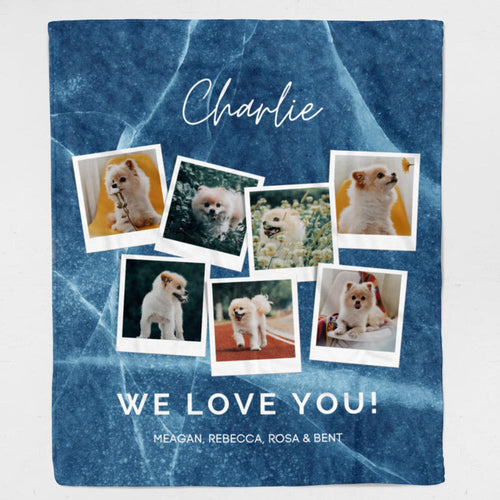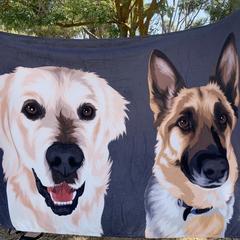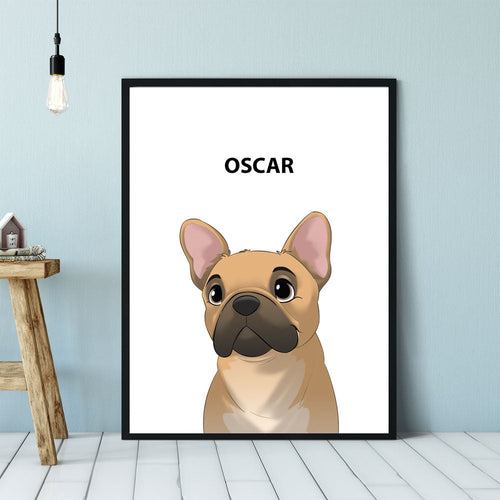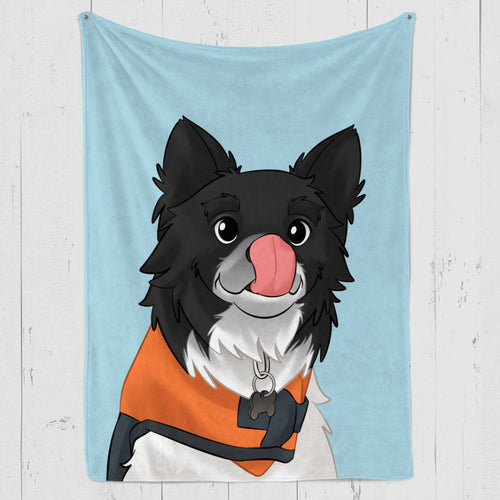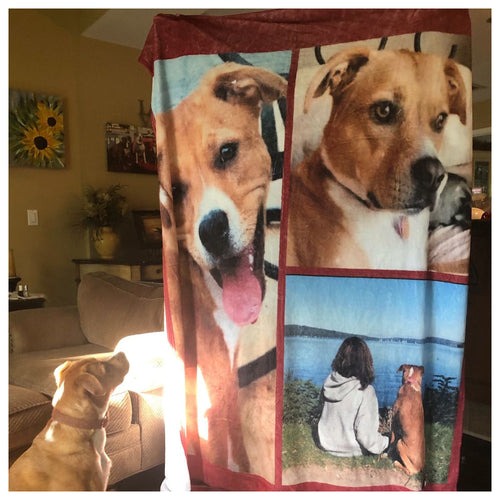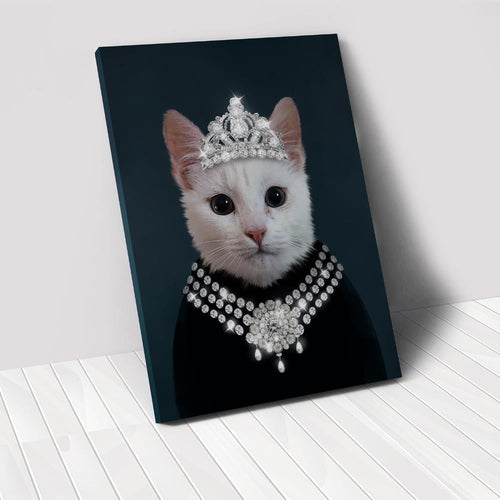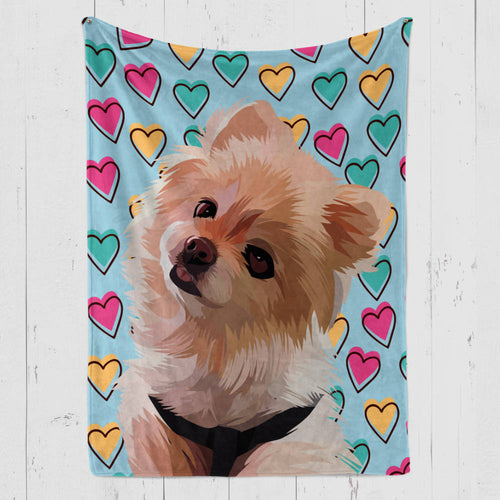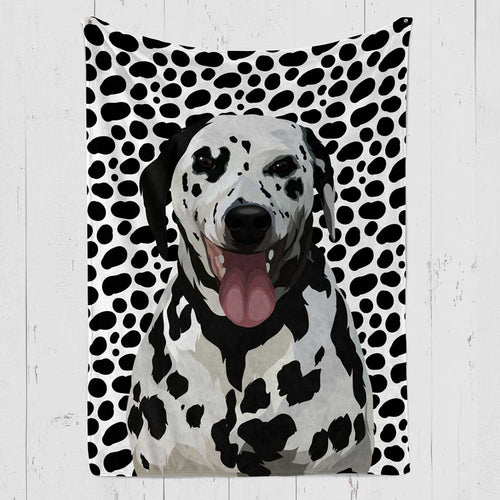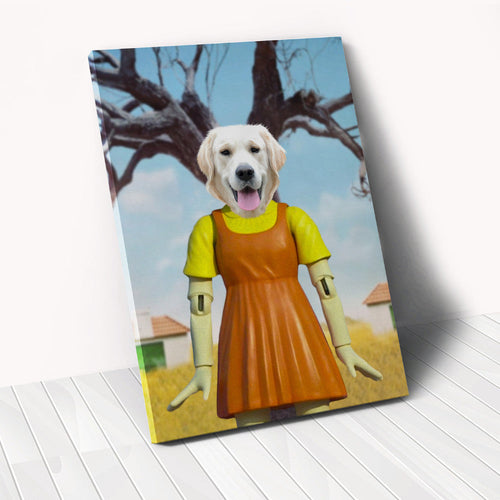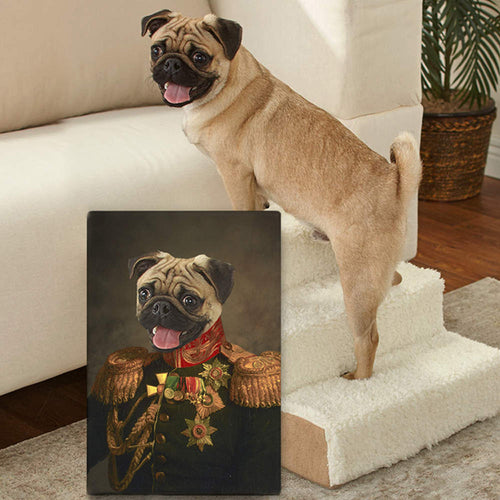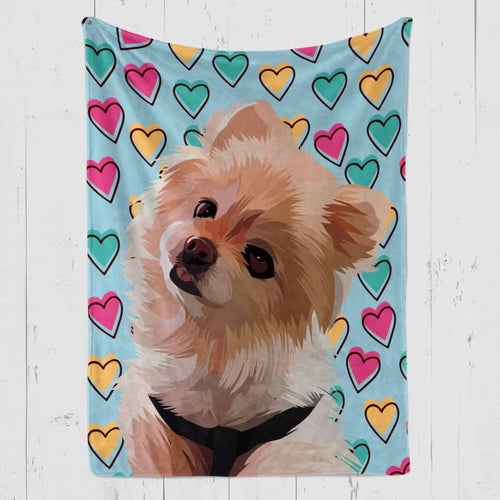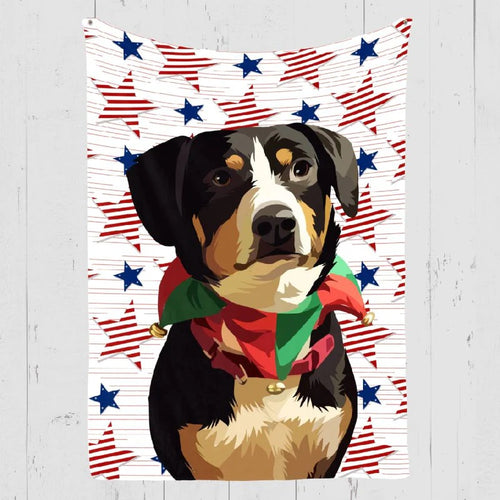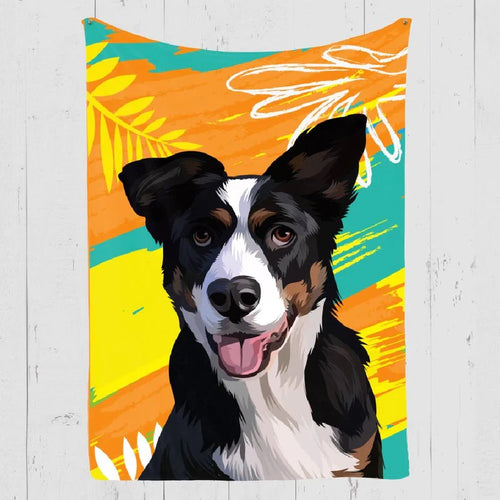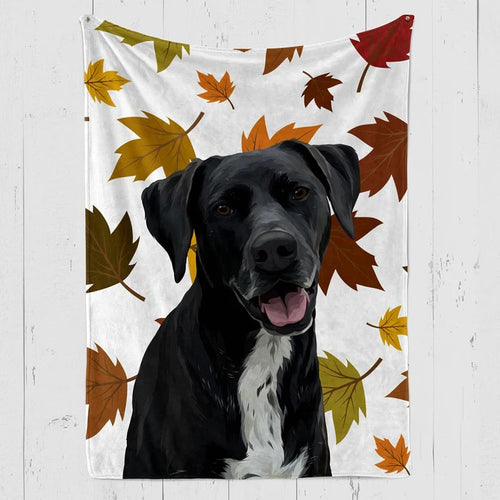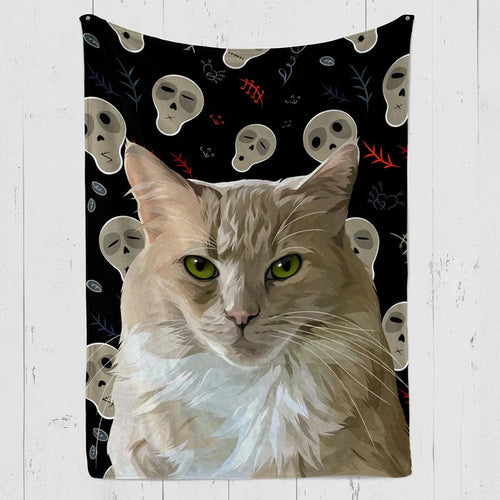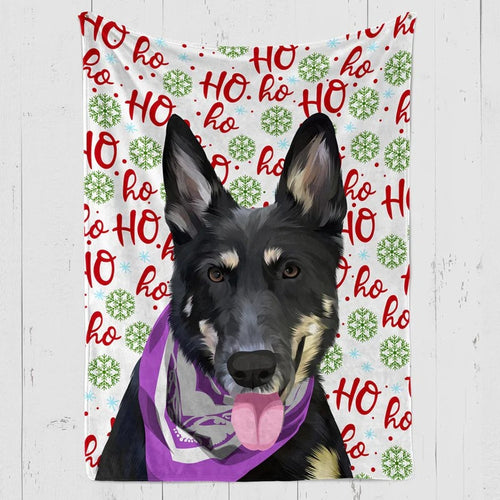
Sometimes you might have noticed that your dog has misaligned lower teeth. This is generally seen in small to medium dogs and is known as underbites. Even though it might look like a problem, it’s not. It is nothing but a characteristic trait that the dogs have to live with and adapt to certain conditions accordingly.
However, special care should be taken while feeding dogs with underbites as it might have a grave impact on them and can hamper their daily activities.
What Dogs Have Underbites?
The following section talks about 10 famous underbite dogs.
1. Cavalier King Charles Spaniel

Cavalier King Charles Spaniel is a purebred English dog that is considered to be a true royal dog. One of the most distinctive features of this breed is its variant colors such as brown, and white and they can even be tri-color. However, the dog requires training because of its high energy levels.
Cavalier King Charles has had a visible underbite since birth. Even though people consider them to have perfect scissor bites, spaniels have underbites and some are very severe. In most cases, these underbites persist due to a lack of correction during their developmental stage.
- Group: Toy Dog
- Height: 12 to 13 inches
- Weight: 13 to 18 pounds
- Energy Level: Moderate
- Physical Characteristics: Large, round eyes with silky, richly colored coat
- Lifespan: 9 to 14 years
- Color: Back & Tan, Bieheim, Tri-color, Ruby
- Shedding: Moderate Shedders
- Bark: They don’t bark much.
2. Pekingese

Apart from Pug and Shih Tzu, this breed of dog also originates from China. Pekingese are royal dogs who are not very accustomed to outdoor life and hence are perfect for family life. Due to their small size, they always look for a safe and trusted environment to ensure personal safety.
Due to their underbite, you can always see one or two of their teeth sticking out from their mouth. However, despite their playful nature, they can get very upset at times due to severe jaw pain occurring due to the canine malocclusion. This can occur if their jaw is used more than necessary.
- Group: Toy Dog
- Height: 6 to 9 inches
- Weight: 8 to 14 pounds
- Energy Level: Low to Moderate
- Physical Characteristics: Compact with a round face and dark eyes
- Lifespan: 12 to 15 years
- Color: White, Black, Fawn, Black and tan, Fawn Brindle, Cream
- Shedding: Shed throughout the year but more during spring and fall.
- Bark: They bark a lot and have a loud barking sound.
3. English Bulldog

One of the important things to know about this breed is that the English Bulldog is not registered in the American Kennel Club Registry. It is basically a lap dog that is very fond of human company. Despite being a mini bulldog, it has a wide chest along with a very strong look.
When talking about dental abnormalities, bulldogs have their upper teeth indrawn and the lower incisors are up. This type 3 malocclusion is very much prominent in bulldogs even with closed mouths.
- Group: Non-sporting group
- Height: 16 inches
- Weight: male: 54 pounds; female: 50 pounds
- Energy Level: Moderate to low
- Physical Characteristics: large and spherical head, short muzzle, and flat face
- Lifespan: 8 to 10 years
- Color: White, Fawn, Piebald, fawn and White
- Shedding: Light to average shedders
- Bark: Doesn’t bark much
4. Shih Tzu

This furry and purebred canine is one of the oldest breeds from Tibet. Shih Tzu was mainly famous during the Ming dynasty. Shih Tzu is a very affectionate and active breed which counts as a perfect family dog.
They have underbites since birth which generally doesn’t cause much problem in young pups. However, as it grows older it faces some challenges while chewing or biting. Therefore, if possible you might want a correction for your fluffball.
- Group: Toy Dog
- Height: 8 to 11 inches
- Weight: 9 to 16 pounds
- Energy Level: Low
- Physical Characteristics: Sturdy body with a short muzzle and undershot bite
- Lifespan: 10 to 16 years
- Color: Black, white, Brindle, Liver and White, Liver
- Shedding: Low Shedders
- Bark: Barks when feels threatened
5. Chihuahua

Chihuahuas are known to be one of the smallest dog breeds in the world with very expensive personalities to deal with. Due to their feisty nature, they need early socialization along with proper training. However, chihuahuas are a source of endless entertainment and fun and can keep you engaged for a long time.
The underbites of this breed are not always visible unless they open their mouth. It is very difficult to detect with their mouths closed. They should have an adapted diet chart as they are very sensitive when it comes to feeding.
- Group: Toy Dog
- Height: 3 to 9 inches
- Weight: 3 to 6 pounds
- Energy Level: Moderate to high
- Physical Characteristics: Terrier-like demeanor with a domed skull and pointed muzzles
- Lifespan: 12 to 20 years
- Color: Chocolate, Cream, Black, White, Gold
- Shedding: Low Shedders
- Bark: Barks a lot.
6. Maltese

The Maltese breed of dog is extremely loyal to their owners. They carry a royal and elegant look with their silky white coats. This breed has immense love for human company and if kept separated from human company, they face separation anxiety. Sometimes they also get irritated with kids hence it's best to not keep them around kids.
The Maltese breed has a very high genetic propensity for underbites as it is genetically induced. This is very common but can cause a lot of problems if not taken care of properly. Sometimes they can also be corrected with the help of braces or extractions.
- Group: Toy dog
- Height: 7 to 12 inches
- Weight: 4 to 8 pounds
- Energy Level: Highly Energetic
- Physical Characteristics: Tufted tail with long straight silky coat
- Lifespan: 12 to 15 years
- Color: White
- Shedding: Low Shedders
- Bark: Excessive Barker
7. Puggle

The name puggle comes from two breeds, “pug” and “beagle”. Hence, it is quite understandable that a Puggle is a result of cross-breeding between a pug and a beagle. Puggles make great pets as they have a liking for anyone who shows care for them. Due to their friendly nature, puggles don’t really fight with other dogs.
In some puggles, you will find underbites and in some, you won’t. This is because only the pug parent has underbites and the beagle parent doesn’t.
- Group: Cross Breed
- Height: 10 to 15 inches tall
- Weight: 14 to 30 pounds
- Energy Level: High Energy
- Physical Characteristics: Floppy, forward-folding ears with a medium-short snout
- Lifespan: 10 to 15 years
- Color: Red, Black, Tan, White
- Shedding: Heavy Shedders
- Bark: Distinctive barker.
8. Lhasa Apso

Lhasa Apso is easily recognized by its long and silky coat and has one of the most unique breed names. The age of this puppy is almost a thousand years that originated in the Himalayas. Despite their small size, they make excellent watchdogs. Also, people claim them to be self-trained dogs who don’t need to be stimulated for any kind of physical activity.
The underbites in Lhasa Apso are not that prominent. Therefore, you may either find one or none. Another thing that helps them to cover their underbites is their long muzzle which gives them a unique appearance as well.
- Group: Non-Sporting Group
- Height: 10 to 11 inches
- Weight: 13 to 15 pounds
- Energy Level: Moderate
- Physical Characteristics: Long dense coat with a signature hair parting
- Lifespan: 12 to 14 years
- Color: Black, Dark Grizzle, Brown, Sandy, Honey
- Shedding: Low Shedders
- Bark: Loud and assertive barker.
9. Pomeranian

Their cute little size makes them perfect friends for kids. Pomeranians have a face that looks like that of a little fox and have almond-shaped eyes. Even though they are very small in size, they never go backward when it comes to facing a big one. They are very loyal to their owners and have great intelligence.
However, their cute underbites may cause a problem when it comes to feeding. Pomeranians should follow a well-maintained feeding chart as they need a lot more attention during feeding. Poorly picked food in their diet can cause serious health problems which eventually result in bad breath and tartar.
- Group: Toy Dog
- Height: 7 to 12 inches
- Weight: 3 to 7 pounds
- Energy Level: Moderate
- Physical Characteristics: Fluffy double coat, foxy face, and prick ears
- Lifespan: 12 to 16 years
- Color: White, Black, Blue, Red, Grey-Shedded, Cream
- Shedding: Heavy Shedders
- Bark: Sharp and loud barkers.
10. Boxer

Boxer dogs are famous for being police dogs or war dogs in movies. They have great athletic agility which increases their demand. Apart from their aggressive side, they are very playful at times which makes them great companions for kids. Boxers make great watchdogs owing to their loyalty and fearlessness.
Even though we mainly find small dogs with underbites, boxers are large dogs with prominent underbites.
- Group: Working Group
- Height: male: up to 25 inches; female: 21 to 25 inches
- Weight: male: 65 to 80 pounds; female: 50 to 65 pounds
- Energy Level: Highly Active
- Physical Characteristics: Dark brown eyes, tight-fitting coat, and wrinkled forehead
- Lifespan: 10 to 12 years
- Color: White, Fawn, and Brindle
- Shedding: Low Shedders
- Bark: Deep and excessive barkers.
Frequently Asked Questions:
Does Underbite Have Underlying Health Issues?
No, underbites do not indicate any kind of underlying health issue. However, it can increase your dog’s chances of developing other dental conditions such as TMJ disorders.
How Can We Tell If the Dog is in Pain from an Underbite?
Some of the signs of oral pain in dogs are:
- Dislike faces being touched
- Blood in saliva
- Difficulty in eating
Can Canine Malocclusion be Fixed?
Canine malocclusion can only be fixed by extracting the tooth that affects your soft tissue or contacts a tooth on the opposite arcade.
What Are the Possible Treatments for Underbites in Dogs?
Underbites are managed only when there is some kind of medical problem. Generally, this is treated by a veterinary dentist who may opt for braces or removal of teeth, depending on the situation. Apart from this, the dog’s teeth should be brushed with dog toothpaste to prevent any kind of dental carries. Human toothpaste should never be used as the chemical in it might cause great harm to the fluffballs.
Conclusion
Underbites are generally common in dogs of small and medium size. Majorly you will see the chinese dogs falling under this category such as Pekingese, Pugs and Shih Tzu. This should not be considered as any serious health problem as it is one of their hereditary traits. However, if your dog develops underbite with time, you may consult a vet.
Frequently Asked Questions:
Is it common for dogs to have an underbite?
Underbites are more prevalent in small and medium-sized dogs and are less frequently observed in larger dog breeds.
How should I care for a dog with an underbite?
Providing special attention to their feeding habits is crucial to prevent potential issues associated with underbites.
Are underbites hereditary in dogs?
Yes, underbites are inherited traits in dogs, passed down from one generation to the next.
Does an underbite impact a dog's personality?
No, underbites do not influence a dog's temperament or behavior.
Reference Links:
Latest Review on Woof Blankets
To have such a masterpiece by my side every day is a gift for me and my memories with Rex. Thank you WoofBlankets for such an opportunity to recreate his image on a blanket.Lara o’ Miguel US, California
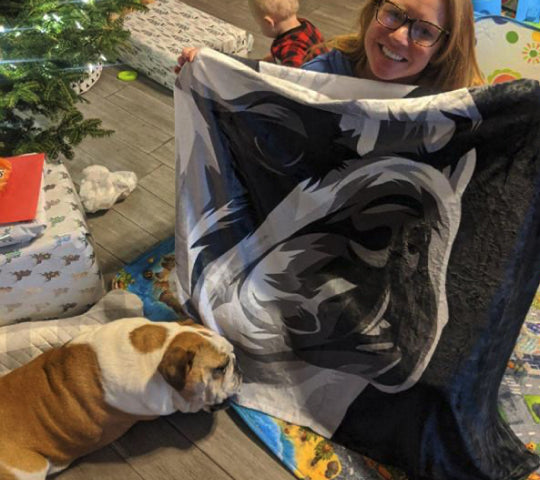
COLLECTION WORTH EVERY PENNY
BEST SELLERS
-
Woofy Single Color Custom Pet Blanket
![Woofy Single Custom Pet Blanket – Woof Blanket]()
- -41%
BlanketsSHOP NOW- Regular price
- from $64.95
- Sale price
- from $64.95
- Regular price
-
$109.95 - Unit price
- per
Sold out -
Exclusive Christmas Custom Pet Blanket
![Exclusive Custom Pet Blanket]()
- -39%
BlanketsSHOP NOW- Regular price
- from $69.95
- Sale price
- from $69.95
- Regular price
-
$114.95 - Unit price
- per
Sold out -
Christmas Custom Pet Blanket
![Christmas Custom Pet Blanket - Custom Dog Blankets]()
- -40%
BlanketsSHOP NOW- Regular price
- from $69.95
- Sale price
- from $69.95
- Regular price
-
$115.95 - Unit price
- per
Sold out -
Watercolor Pet Portraits
![]() SHOP NOW
SHOP NOW- Regular price
- from $59.95
- Sale price
- from $59.95
- Regular price
-
- Unit price
- per
Sold out -
Woofy Christmas Custom Dog Blanket
![Woofy Christmas Custom Dog Blanket]()
- -39%
BlanketsSHOP NOW- Regular price
- from $69.95
- Sale price
- from $69.95
- Regular price
-
$114.95 - Unit price
- per
Sold out -
Modern Pet Owner Portrait
![]()
- -32%
CanvasSHOP NOW- Regular price
- from $84.95
- Sale price
- from $84.95
- Regular price
-
$124.95 - Unit price
- per
Sold out -
Woof Splash Custom Pet Blanket
![Woof Splash Custom Pet Blanket]()
- -39%
BlanketsSHOP NOW- Regular price
- from $69.95
- Sale price
- from $69.95
- Regular price
-
$114.95 - Unit price
- per
Sold out -
The Admiral - Custom Pet Portrait
![The Admiral - Custom Pet Portrait Online]()
- NEW
- -25%
CanvasSHOP NOW- Regular price
- from $59.95
- Sale price
- from $59.95
- Regular price
-
$79.95 - Unit price
- per
Sold out -
Wings of Loyalty - Custom Pet Portrait
![]()
- NEW
CanvasSHOP NOW- Regular price
- from $59.95
- Sale price
- from $59.95
- Regular price
-
- Unit price
- per
Sold out -
Pet Memorial Custom Photo Collage Blanket
![Personalized pet memorial quilt with photos]()
- -41%
BlanketsSHOP NOW- Regular price
- from $64.95
- Sale price
- from $64.95
- Regular price
-
$109.95 - Unit price
- per
Sold out -
Celestial Paws - Custom Pet Portrait
![]() CanvasSHOP NOW
CanvasSHOP NOW- Regular price
- from $59.95
- Sale price
- from $59.95
- Regular price
-
- Unit price
- per
Sold out -
The Loyal Soul - Custom Pet Portrait
![]()
- NEW
SHOP NOW- Regular price
- from $59.95
- Sale price
- from $59.95
- Regular price
-
- Unit price
- per
Sold out -
Cartoonized Pet Portraits (New)
![Cartoonized Pet Custom Portraits Online]()
- -36%
SHOP NOW- Regular price
- from $59.95
- Sale price
- from $59.95
- Regular price
-
$93.95 - Unit price
- per
Sold out -
The French Sailor - Custom Pet Portrait
![]()
- -25%
CanvasSHOP NOW- Regular price
- from $59.95
- Sale price
- from $59.95
- Regular price
-
$79.95 - Unit price
- per
Sold out -
The Policeman - Custom Pet Portrait
![]()
- NEW
- -25%
CanvasSHOP NOW- Regular price
- from $59.95
- Sale price
- from $59.95
- Regular price
-
$79.95 - Unit price
- per
Sold out -
The General - Custom Pet Portrait
![]()
- NEW
- -25%
CanvasSHOP NOW- Regular price
- from $59.95
- Sale price
- from $59.95
- Regular price
-
$79.95 - Unit price
- per
Sold out -
Woof Love Custom Pet Blanket
![Woof Love Custom Pet Blanket]()
- -39%
BlanketsSHOP NOW- Regular price
- from $69.95
- Sale price
- from $69.95
- Regular price
-
$114.95 - Unit price
- per
Sold out -
Summer Time Custom Pet Blanket
![Summer Time Custom Pet Blanket]()
- -39%
BlanketsSHOP NOW- Regular price
- from $69.95
- Sale price
- from $69.95
- Regular price
-
$114.95 - Unit price
- per
Sold out -
The Ambassador - Custom Pet Portrait
![The Ambassador - Custom Pet Portrait Online]()
- NEW
- -25%
CanvasSHOP NOW- Regular price
- from $59.95
- Sale price
- from $59.95
- Regular price
-
$79.95 - Unit price
- per
Sold out -
Fall In Love Custom Pet Blanket
![Fall In Love Custom Dog Blanket]()
- NEW
- -39%
BlanketsSHOP NOW- Regular price
- from $69.95
- Sale price
- from $69.95
- Regular price
-
$114.95 - Unit price
- per
Sold out -
The Classy Lady - Custom Pet Portrait
![The Classy Lady]()
- NEW
- -25%
CanvasSHOP NOW- Regular price
- from $59.95
- Sale price
- from $59.95
- Regular price
-
$79.95 - Unit price
- per
Sold out -
The Duke - Custom Pet Portrait
![The Duke - Custom Pet Portrait]()
- NEW
- -25%
CanvasSHOP NOW- Regular price
- from $59.95
- Sale price
- from $59.95
- Regular price
-
$79.95 - Unit price
- per
Sold out -
Dog In Suit- Custom Pet Portrait
![Dash Dog In Suit- Custom Pet Portrait Online]()
- NEW
- -25%
CanvasSHOP NOW- Regular price
- from $59.95
- Sale price
- from $59.95
- Regular price
-
$79.95 - Unit price
- per
Sold out -
The Princess - Custom Pet Portrait
![]()
- NEW
- -25%
CanvasSHOP NOW- Regular price
- from $59.95
- Sale price
- from $59.95
- Regular price
-
$79.95 - Unit price
- per
Sold out -
Modern Pet Portrait with One Mug
![Modern Pet Portrait with One Mug]()
- -25%
Print MaterialSHOP NOW- Regular price
- from $99.95
- Sale price
- from $99.95
- Regular price
-
$133.95 - Unit price
- per
Sold out -
The Aristocrat - Custom Pet Portrait
![The Aristocrat - Custom Pet Portrait At Best Price]()
- NEW
- -25%
CanvasSHOP NOW- Regular price
- from $59.95
- Sale price
- from $59.95
- Regular price
-
$79.95 - Unit price
- per
Sold out -
Single Color Custom Blanket with 1 Mug
![Single Color Custom Blanket with 1 Mug]() BlanketsSHOP NOW
BlanketsSHOP NOW- Regular price
- from $99.95
- Sale price
- from $99.95
- Regular price
-
- Unit price
- per
Sold out -
Single Color Custom Blanket with 2 Pillows
![Single Color Custom Pet Blanket with 2 Pillows]()
- -21%
BlanketsSHOP NOW- Regular price
- from $99.95
- Sale price
- from $99.95
- Regular price
-
$125.95 - Unit price
- per
Sold out -
The Dog in Suit Custom Pet Mug
![]()
- -20%
MugsSHOP NOW- Regular price
- $39.95
- Sale price
- $39.95
- Regular price
-
$49.95 - Unit price
- per
Sold out -
Angel Custom Pet Mug
![]()
- -20%
MugsSHOP NOW- Regular price
- $39.95
- Sale price
- $39.95
- Regular price
-
$49.95 - Unit price
- per
Sold out -
This Human Belongs To - Custom Pet Mug
![]()
- NEW
- -20%
MugsSHOP NOW- Regular price
- $39.95
- Sale price
- $39.95
- Regular price
-
$49.95 - Unit price
- per
Sold out -
It's Not Dog Hair Custom Pet Mug
![]()
- NEW
- -20%
MugsSHOP NOW- Regular price
- $39.95
- Sale price
- $39.95
- Regular price
-
$49.95 - Unit price
- per
Sold out -
My Dog Is My Valentine Custom Pet Mug
![]()
- NEW
- -20%
MugsSHOP NOW- Regular price
- $39.95
- Sale price
- $39.95
- Regular price
-
$49.95 - Unit price
- per
Sold out -
3 Photos With Message Custom Pet Mug
![]()
- NEW
- -20%
MugsSHOP NOW- Regular price
- $39.95
- Sale price
- $39.95
- Regular price
-
$49.95 - Unit price
- per
Sold out -
My Valentine Has Four Legs- Personalized Mugs
![]()
- NEW
- -20%
MugsSHOP NOW- Regular price
- $39.95
- Sale price
- $39.95
- Regular price
-
$49.95 - Unit price
- per
Sold out -
Dog Mamma Custom Pet Coffee Mug
![]()
- -20%
MugsSHOP NOW- Regular price
- $39.95
- Sale price
- $39.95
- Regular price
-
$49.95 - Unit price
- per
Sold out -
Uncle Sam - Custom Pet Portrait
![]()
- NEW
- -25%
CanvasSHOP NOW- Regular price
- from $59.95
- Sale price
- from $59.95
- Regular price
-
$79.95 - Unit price
- per
Sold out -
The Revolutionary Emperor - Custom Pet Portrait
![]()
- NEW
- -25%
CanvasSHOP NOW- Regular price
- from $59.95
- Sale price
- from $59.95
- Regular price
-
$79.95 - Unit price
- per
Sold out -
The Princess Paws - Custom Pet Portrait
![]()
- -25%
CanvasSHOP NOW- Regular price
- from $59.95
- Sale price
- from $59.95
- Regular price
-
$79.95 - Unit price
- per
Sold out -
The Dark Crusader Knight - Custom Pet Portrait
![]()
- -25%
CanvasSHOP NOW- Regular price
- from $59.95
- Sale price
- from $59.95
- Regular price
-
$79.95 - Unit price
- per
Sold out
